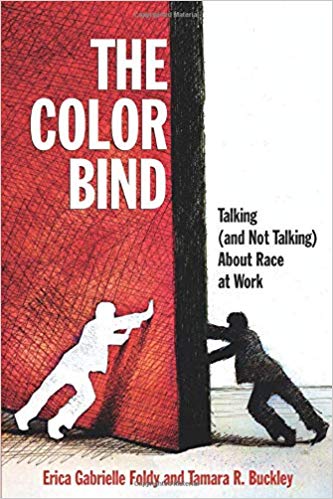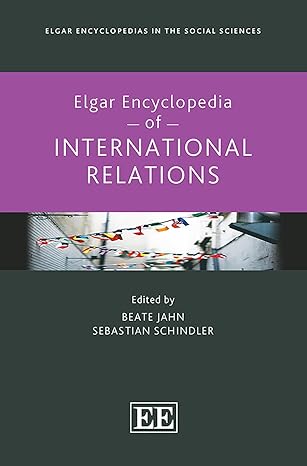Since the 1960s, the dominant model for fostering diversity and inclusion in the United States has been the “color blind” approach, which emphasizes similarity and assimilation and insists that people should be understood as individuals, not as members of racial or cultural groups. This approach is especially prevalent in the workplace, where discussions about race and ethnicity are considered taboo. Yet, as widespread as “color blindness” has become, many studies show that the practice has damaging repercussions, including reinforcing the existing racial hierarchy by ignoring the significance of racism and discrimination. In The Color Bind, workplace experts Erica Foldy and Tamara Buckley investigate race relations in office settings, looking at how both color blindness and what they call “color cognizance” have profound effects on the ways coworkers think and interact with each other. Based on an intensive two-and-a-half-year study of employees at a child welfare agency, The Color Bind shows how color cognizance—the practice of recognizing the profound impact of race and ethnicity on life experiences while affirming the importance of racial diversity—can help workers move beyond silence on the issue of race toward more inclusive workplace practices. Drawing from existing psychological and sociological research that demonstrates the success of color-cognizant approaches in dyads, workgroups and organizations, Foldy and Buckley analyzed the behavior of work teams within a child protection agency. The behaviors of three teams in particular reveal the factors that enable color cognizance to flourish. While two of the teams largely avoided explicitly discussing race, one group, “Team North,” openly talked about race and ethnicity in team meetings. By acknowledging these differences when discussing how to work with their clients and with each other, the members of Team North were able to dig into challenges related to race and culture instead of avoiding them. The key to achieving color cognizance within the group was twofold: It required both the presence of at least a few members who were already color cognizant, as well as an environment in which all team members felt relatively safe and behaved in ways that strengthened learning, including productively resolving conflict and reflecting on their practice. The Color Bind provides a useful lens for policy makers, researchers and practitioners pursuing in a wide variety of goals, from addressing racial disparities in health and education to creating diverse and inclusive organizations to providing culturally competent services to clients and customers. By foregrounding open conversations about race and ethnicity, Foldy and Buckley show that institutions can transcend the color bind in order to better acknowledge and reflect the diverse populations they serve.
چکیده فارسی
از دهه 1960، مدل غالب برای پرورش تنوع و شمول در ایالات متحده رویکرد "کور رنگ" بوده است که بر شباهت و همسان سازی تاکید می کند و اصرار دارد که افراد را باید به عنوان افراد درک کرد، نه به عنوان اعضای نژاد یا فرهنگی. گروه ها. این رویکرد به ویژه در محل کار رایج است، جایی که بحث در مورد نژاد و قومیت تابو محسوب می شود. با این حال، همانطور که "کوررنگی" گسترده شده است، بسیاری از مطالعات نشان می دهند که این عمل دارای پیامدهای مخربی است، از جمله تقویت سلسله مراتب نژادی موجود با نادیده گرفتن اهمیت نژادپرستی و تبعیض. در The Color Bind، اریکا فولدی و تامارا باکلی، کارشناسان محل کار، روابط نژادی را در محیطهای اداری بررسی میکنند و به این میپردازند که چگونه کوررنگی و آنچه که «شناخت رنگ» مینامند، تأثیرات عمیقی بر نحوه تفکر و تعامل همکاران با یکدیگر دارند. بر اساس یک مطالعه فشرده دو و نیم ساله بر روی کارمندان یک آژانس رفاه کودکان، The Color Bind نشان می دهد که چگونه شناخت رنگ - تمرین تشخیص تأثیر عمیق نژاد و قومیت بر تجربیات زندگی در حالی که اهمیت نژاد را تأیید می کند. تنوع - می تواند به کارگران کمک کند تا فراتر از سکوت در مورد موضوع نژاد به سمت شیوه های محیط کار فراگیرتر حرکت کنند. فولدی و باکلی با استفاده از تحقیقات روانشناختی و جامعهشناختی موجود که موفقیت رویکردهای رنگشناختی را در زوجها، گروههای کاری و سازمانها نشان میدهد، رفتار تیمهای کاری در یک آژانس حمایت از کودکان را تحلیل کردند. رفتارهای سه تیم به طور خاص فاکتورهایی را نشان می دهد که شناخت رنگ را قادر می سازد شکوفا شود. در حالی که دو تیم تا حد زیادی از بحث در مورد نژاد اجتناب کردند، یک گروه، "تیم شمال" آشکارا در مورد نژاد و قومیت در جلسات تیم صحبت کرد. اعضای تیم شمال با پذیرفتن این تفاوت ها هنگام بحث در مورد نحوه کار با مشتریان خود و با یکدیگر، توانستند به جای اجتناب از چالش های مربوط به نژاد و فرهنگ، چالش های مربوط به نژاد و فرهنگ را بررسی کنند. کلید دستیابی به شناخت رنگ در گروه دو جنبه داشت: هم حضور حداقل چند عضوی که قبلاً رنگها را تشخیص میدادند و هم به محیطی نیاز داشت که در آن همه اعضای تیم احساس امنیت نسبتاً داشته باشند و به روشهایی رفتار کنند که یادگیری را تقویت کند. از جمله حل ثمربخش تعارض و تأمل در عملکرد آنها. Color Bind لنز مفیدی را برای سیاستگذاران، محققان و شاغلین که اهداف متنوعی را دنبال میکنند، از پرداختن به نابرابریهای نژادی در بهداشت و آموزش گرفته تا ایجاد سازمانهای متنوع و فراگیر تا ارائه خدمات شایسته فرهنگی به مشتریان و مشتریان ارائه میکند. فولدی و باکلی با پیشزمینه کردن گفتگوهای باز درباره نژاد و قومیت، نشان میدهند که مؤسسات میتوانند از پیوند رنگی فراتر روند تا جمعیتهای متنوعی را که به آنها خدمت میکنند، بهتر بشناسند و منعکس کنند.
ادامه ...
بستن ...
Ebook details:
عنوان: The Color Bind: Talking (and Not Talking) About Race at Work
نویسنده: Erica Gabrielle Foldy, Tamara R. Buckley
ناشر: Russell Sage Foundation (February 28, 2014)
زبان: English
شابک: 0871544725, 978-0871544728
حجم: 2 Mb
فرمت: TRU pdf
ادامه ...
بستن ...










